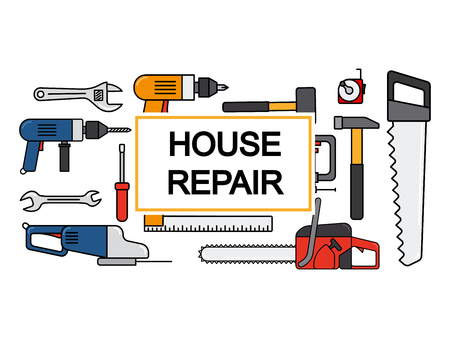Introduction to ADUs and Garage Conversions
In recent years, Accessory Dwelling Units (ADUs) have become a highly sought-after solution for homeowners looking to maximize their property’s potential. An ADU, sometimes called a granny flat, in-law suite, or backyard cottage, is a secondary residential unit built on the same lot as an existing single-family home. Among the various ways to create an ADU, converting an existing garage stands out as one of the most popular and cost-effective options. This approach allows homeowners to transform underutilized space into functional living quarters without the need for new construction from the ground up. The trend toward garage conversions is especially prevalent in states like California, where housing shortages and high property values drive creative approaches to increasing housing supply. Across the United States, cities and states are revisiting zoning laws and regulations to encourage ADU development as part of broader efforts to address affordable housing challenges. As more Americans seek flexible living arrangements—whether for family members, rental income, or multigenerational households—garage conversions offer a practical pathway to meet evolving housing needs.
Current California Laws on Garage-to-ADU Conversions
California has become a national leader in promoting Accessory Dwelling Units (ADUs), particularly when it comes to transforming existing garages into livable spaces. The state’s legal framework is designed to streamline the conversion process, reduce local barriers, and encourage homeowners to create more housing. Understanding the current laws is essential for anyone considering a garage-to-ADU project.
Key State Legislation Enabling Garage ADUs
The foundation for garage ADU conversions rests on several state-level bills, most notably Senate Bill 1069 (2017), Assembly Bill 68 (2020), and Assembly Bill 2221 (2023). These laws override many restrictive local ordinances and require cities to approve qualifying ADU projects by right, as long as they meet objective standards. The core requirements include:
| Requirement | Description |
|---|---|
| Owner Occupancy | No owner occupancy requirement for new ADUs permitted between 2020 and 2025. |
| Parking Replacement | No replacement parking required if converting an existing garage within half a mile of public transit. |
| Setbacks | No setback required for conversions within existing structures; new additions must meet four-foot side and rear setbacks. |
| Size Limits | Up to 800 sq ft for detached ADUs, with flexibility for garage conversions that do not expand the footprint. |
| Permitting Timeline | Cities must approve or deny complete permit applications within 60 days. |
Local Zoning vs. State Mandates
While local governments retain some authority over building standards, California law limits their ability to block or unduly delay garage-to-ADU projects. Cities may impose objective development standards—such as height, landscaping, and architectural compatibility—but cannot require discretionary reviews or public hearings if the proposal meets state guidelines. Homeowners benefit from clear rules that simplify compliance across municipalities.
Recent Legal Updates Impacting Garage ADUs
The latest legislative updates continue to remove hurdles. As of 2023, Assembly Bill 2221 clarifies ambiguous language regarding setbacks and height limits, ensuring that most single-story garage conversions proceed without unnecessary delays. Additionally, the law prohibits cities from imposing minimum lot sizes for garage ADUs and expands allowances for junior accessory dwelling units (JADUs) within converted garages.
Summary: What Homeowners Need to Know
If you own property in California and are considering converting your garage into an ADU, you are protected by robust state laws that make approval straightforward—provided your project meets basic safety and design requirements. Always consult both state statutes and your local planning department for any unique city-specific guidelines, but rest assured that California’s legal environment strongly favors garage-to-ADU conversions today.

3. How Other States Are Approaching Garage ADUs
While California is often seen as a leader in ADU-friendly legislation, several other states have adopted their own approaches to garage conversions. Examining states like Oregon, Washington, and Texas reveals both shared principles and region-specific requirements. For example, Oregon—especially cities like Portland—has actively promoted ADU development through streamlined permitting and minimal parking mandates. Like California, Oregon allows both attached and detached garage conversions into legal ADUs but places strong emphasis on design compatibility with the existing neighborhood fabric.
Washington has seen significant progress in metropolitan areas such as Seattle, where local ordinances permit garage conversions with relaxed off-street parking requirements and reduced minimum lot sizes. However, some suburban jurisdictions maintain stricter setback or owner-occupancy rules, which can complicate projects compared to California’s more standardized statewide approach.
Texas, by contrast, presents a patchwork of regulations highly dependent on city codes. For instance, Austin encourages garage ADUs by simplifying utility connections and reducing impact fees, while Houston imposes more complex permitting steps and sometimes stricter fire safety standards for attached structures. In many Texas cities, zoning restrictions may limit the size or allowable use of converted garages unless specific exceptions are granted.
Key Similarities Across States
- Most states require permits and inspections for garage conversions to ensure code compliance.
- The majority encourage ADUs as a solution to housing shortages and affordability challenges.
- Parking requirements are being relaxed in urban centers to promote ADU development.
Notable Differences in Approach
- California and Oregon provide more statewide guidance, making it easier to predict project feasibility regardless of city or county.
- Texas and Washington often defer to local jurisdictions, leading to wide variability in what is allowed or restricted for garage ADUs.
- Design review processes may be more rigorous in states emphasizing neighborhood character (like Oregon), while others focus primarily on life safety and fire codes.
Navigating Multi-State Regulations
If you’re considering converting your garage into an ADU outside California, it’s crucial to research not only state statutes but also city-level ordinances. Each location’s unique blend of zoning, safety standards, and permitting timelines will shape your project’s scope and complexity. Consulting with a local architect or engineer familiar with these nuances is highly recommended for a successful—and legal—conversion.
4. Building Codes, Permits, and Engineering Considerations
When planning to convert your garage into an Accessory Dwelling Unit (ADU), navigating the permitting process and adhering to local building codes is critical for both legality and safety. California has streamlined ADU regulations in recent years, but each city or county may have unique requirements, so understanding these details is crucial before starting any construction. Other states are also adopting ADU-friendly policies, but code enforcement and permit processes can differ significantly.
Essential Permitting Steps
Securing the right permits is non-negotiable. Here’s a general outline of the typical steps involved:
| Step | Description |
|---|---|
| Pre-Application Research | Review local zoning ordinances and state laws regarding ADUs; verify if your property qualifies for a garage conversion. |
| Site Assessment | Consult with a licensed engineer or architect to evaluate the structure’s feasibility for conversion. |
| Plan Submission | Submit detailed plans, including architectural drawings and engineering calculations, to your local building department. |
| Plan Review & Corrections | The city reviews your plans for compliance; revisions may be requested before approval. |
| Permit Issuance | Once approved, permits are issued—work cannot legally commence without them. |
| Inspections | Periodic inspections during construction ensure work meets all applicable codes. |
| Final Sign-Off | A final inspection grants occupancy approval if everything passes code. |
Structural and Code Requirements
Foundations and Framing: Many garages were not originally designed for habitation. The slab must be checked for moisture barriers, insulation, and load-bearing capacity. Walls may require reinforcement or additional framing to meet seismic codes, especially in California.
Egress and Safety: At least one legal egress window or door is required in sleeping areas. Smoke and carbon monoxide detectors must be hardwired according to state law.
Utilities: Separate electrical panels, plumbing upgrades, and dedicated water heaters might be required by code.
Energy Efficiency: California’s Title 24 mandates high standards for insulation, windows, lighting, and HVAC efficiency in all new living spaces.
Key Engineering Considerations
- Load Calculations: Structural engineers will assess whether the existing roof and walls can support any modifications or additions (such as a loft or new roofing material).
- Mold and Moisture Control: Proper vapor barriers, drainage systems, and ventilation are necessary to prevent mold growth in previously unconditioned spaces.
- No Substandard Workarounds: Cutting corners on foundation upgrades or fire separation assemblies risks not only permit rejection but also occupant safety.
- Sustainability Options: Solar readiness and EV charging infrastructure are increasingly encouraged in California jurisdictions for new ADUs.
Pitfalls to Avoid When Converting Your Garage
- Ignoring setback requirements or maximum allowable square footage can result in costly delays or forced demolition.
- Unpermitted work may affect insurance coverage and future resale value.
- Lack of coordination with utility providers can lead to service interruptions or costly retrofits post-construction.
If you want your garage-to-ADU project to pass smoothly through permitting while ensuring long-term durability and comfort, engaging with licensed professionals familiar with local codes from the outset is indispensable. Each jurisdiction may interpret state guidelines differently—so always check with your city’s building department before breaking ground.
5. Cultural Attitudes and Neighborhood Impacts
The acceptance and integration of Accessory Dwelling Units (ADUs) such as garage conversions are deeply influenced by American cultural attitudes, particularly in states like California where housing shortages have driven innovation. Historically, the concept of multigenerational living or renting out a portion of one’s property was viewed with some skepticism, especially in suburban neighborhoods that valued privacy and single-family zoning. However, as real estate prices soar and urban density becomes a necessity, perspectives are shifting.
American Perspectives on ADUs
In many U.S. communities, there’s growing recognition that ADUs can provide flexible solutions for extended family, caregivers, or supplemental rental income. In California, the housing crisis has made ADUs a practical answer to affordability issues. Residents are increasingly open to the idea of using their garages as living spaces, provided that privacy and neighborhood character are maintained. Nevertheless, some homeowners remain wary about potential parking shortages, increased traffic, or changes to the community fabric.
Neighborhood Acceptance and Concerns
While ADU laws have loosened across California and several other states, local acceptance varies widely. Some neighborhoods embrace garage ADUs as a way to foster diversity and support aging-in-place for longtime residents. Others fear that increased density could strain local infrastructure or erode property values. Community outreach programs and design guidelines often help bridge these gaps by ensuring new ADUs blend aesthetically with existing homes and address concerns about noise or congestion.
Cultural Factors Shaping the ADU Movement
The broader cultural shift toward sustainability, walkability, and mixed-use development also supports the rise of garage-based ADUs. Millennials and younger generations tend to value flexibility over square footage, making compact accessory units more appealing. At the same time, changing demographics—such as an aging population and more diverse family structures—drive demand for adaptable housing solutions. Ultimately, the ADU movement reflects both evolving American values and pragmatic responses to today’s housing challenges.
6. Practical Steps for Homeowners
Step-by-Step Technical Guidance for Garage-to-ADU Projects
Transforming your garage into an Accessory Dwelling Unit (ADU) can be a rewarding project, but it requires careful planning and execution. Here’s a technical step-by-step guide tailored to U.S. homeowners, especially those in California, to help you navigate the process successfully.
Step 1: Assess Feasibility and Local Regulations
Start by reviewing your local zoning ordinances and building codes. In California, recent state laws (like AB 68 and SB 13) make it easier to convert garages, but city requirements can still vary. Check minimum lot size, parking mandates, setbacks, and maximum ADU size allowed in your area.
Step 2: Plan Your Design
Work with a licensed architect or designer familiar with ADU conversions. Consider insulation, ventilation, fire safety, and accessibility requirements. Develop detailed floor plans that address natural lighting, emergency egress, bathroom and kitchen locations, and utility routes.
Step 3: Secure Permits
Submit your plans to the local building department for review. This typically includes architectural drawings, structural calculations (especially if removing garage doors or adding plumbing), and energy compliance documentation. Be prepared for plan check comments and possible revisions.
Step 4: Prepare the Site
Clear out the garage and address any structural upgrades needed—such as seismic retrofitting or foundation improvements common in older California homes. Make sure there’s proper drainage and waterproofing before starting interior work.
Step 5: Construct and Upgrade Utilities
Your contractor will handle framing new walls, installing insulation, windows, doors, electrical wiring, plumbing lines for kitchens/bathrooms, HVAC systems, and smoke/carbon monoxide detectors. Many cities require separate utility meters or backflow prevention devices for ADUs.
Step 6: Inspections and Compliance
Schedule required inspections throughout construction—typically foundation, framing, electrical/plumbing rough-in, insulation, and final inspection. Stay responsive to inspectors’ feedback to ensure code compliance at every stage.
Pro Tip: Hire Licensed Professionals
While DIY is tempting for some tasks, most jurisdictions require licensed contractors for structural work or major system upgrades. Hiring experienced pros helps avoid costly mistakes and speeds up permit approval.
Final Thoughts
A successful garage-to-ADU conversion increases your property value and offers flexible living options for family or rental income. By following these technical steps and staying informed about state/local regulations, homeowners can confidently navigate their ADU projects from concept through completion.
7. Future Outlook and Evolving Regulations
The landscape for creating Accessory Dwelling Units (ADUs) in garages is set to evolve rapidly as both California and other states respond to housing shortages, shifting demographics, and changing urban needs.
Emerging Trends in Garage ADUs
There is a clear movement toward further liberalization of ADU regulations. States like California have already set the standard by streamlining permitting processes, reducing impact fees, and eliminating owner-occupancy requirements. Other states—including Oregon, Washington, and Colorado—are now following suit, with legislative proposals aimed at making ADU development in garages more accessible for homeowners. This trend is driven by a growing recognition that ADUs offer a flexible solution for multigenerational living, rental income, and affordable housing options within existing neighborhoods.
Expected Regulatory Changes
Looking ahead, we can expect regulatory bodies to continue refining building codes and zoning ordinances to better accommodate garage conversions. Anticipated changes include more lenient setback requirements, increased maximum unit sizes, and incentives for energy-efficient or sustainable construction methods. Additionally, there may be expanded allowances for streamlined inspections, expedited permitting timelines, and possible state-level overrides of restrictive local ordinances. Homeowners should stay informed about these updates through city planning departments or state housing agencies.
The Role of ADUs as a Long-Term Housing Solution
ADUs are increasingly recognized as a key component in Americas strategy to address long-term housing demand. By enabling the adaptive reuse of existing structures like garages, communities can densify without drastically altering neighborhood character or requiring large-scale new developments. As affordability remains a central concern across the U.S., the role of garage-based ADUs—as both primary residences and rental units—will likely expand. Policymakers and urban planners see these conversions as a scalable response to population growth and evolving household needs.
Staying Ahead: What Homeowners Should Watch For
For those considering creating an ADU in their garage, staying ahead of regulatory changes will be crucial. As state and local rules continue to adapt, opportunities for more flexible design choices, reduced costs, and faster project approvals are expected to increase. Engaging with local planning commissions and professional consultants can help homeowners maximize the benefits of future reforms while ensuring compliance with the latest standards.
Conclusion
The future of garage-based ADUs looks promising as regulations become more supportive across California and other states. By keeping informed on emerging trends and anticipated policy shifts, homeowners can take full advantage of these evolving opportunities—transforming underutilized garages into valuable assets that meet America’s ongoing housing needs.


